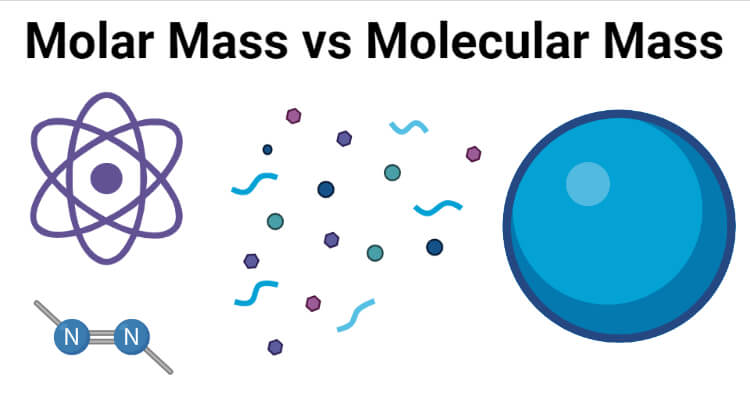Interesting Science Videos
Molar Mass Definition
Molar mass is the mass of one mole of a substance obtained by the mass of a compound divided by the amount of the substance present in the compound.
- Molar mass is considered an average mass of the molecules as the molecular mass might be varied due to the presence of isotopes. In simple words, the molar mass is the measure of the number of molecules or atoms present in one mole of a substance.
- It is not a molecular concept and instead is used for bulk quantities as a function of the relative abundances of different isotopes of the substance.
- The molar mass of a compound is measured in terms of g/mol, where a mole is defined in such a way that the molar mass is equal to the average mass of one molecule of the substance.
- Molar mass is an inherent quantity of a substance that doesn’t depend on the size of the sample. In the case of elements, the molar mass is determined on the basis of the number of moles of atoms present in it.
- The accuracy and precision of molar mass depend on the accuracy of the atomic masses and the value of the molar mass constant.

Molecular Mass Definition
Molecular mass is the mass of a molecule of the substance, which might be different from different molecules as they may be composed of different isotopes.
- The measurement of molecular mass is usually conducted in the case of microscopic analysis of substances.
- Molecular mass only measures the mass of molecules and not of atoms and compounds.
- It is measured in terms of AMU (atomic mass unit or dalton) and can be used to measure the relative molecular mass.
- As molecular mass is synonymous with other quantities like molecular weight and molar mass and the distinction is not helpful. However, differentiation is essential in critical areas.
- The molecular mass of small to medium-sized molecules can be measured by mass spectrometry. It is used in the determination of the composition of elements in a molecule.
- In the case of macromolecules like proteins and nucleic acid, the molecular mass can also be determined by mass spectrometry. It can also be determined by methods based on viscosity and light scattering.
- Molecular mass is considered more accurate than other synonymous measurements as it measures the masses of molecules and thus provides more precise results.
6 Major Differences (Molar Mass vs Molecular Mass)
| Characteristics | Molar Mass | Molecular Mass |
| Definition | Molar mass is the mass of one mole of a substance obtained by the mass of a compound divided by the amount of the substance present in the compound. | Molecular mass is the mass of a molecule of the substance, which might be different from different molecules as they may be composed of different isotopes. |
| SI unit | Molar mass is measured in terms of g/mol or kg/mol. | Molecular mass is measured in terms of AMU or Dalton. |
| Measures | Molar mass measures the mass of a mole of a substance. | Molecular mass measures the mass of molecules. |
| Components | Molar mass is used to measure the mass of atoms, molecules as well as compounds. | Molecular mass is used to measure the masses of molecules only. |
| Determined by | Molar mass is determined by dividing the mass of the compound by the moles of the substance. | Molecular mass is determined by calculating the atomic mass of all the atoms present in the molecule. |
| Commonly used | Molar mass is used to measure the mass of larger quantities in bulk. | Molecular mass is used to measure smaller quantities of chemical compounds. |
References
- Gautum SD, Pant M and Adhikari NR (2016). Comprehensive Chemistry, Part 2. Sixth Edition. Heritage Publishers and Distributors Pvt. Ltd
- https://www.differencebetween.com/difference-between-molar-mass-and-vs-molecular-mass/
